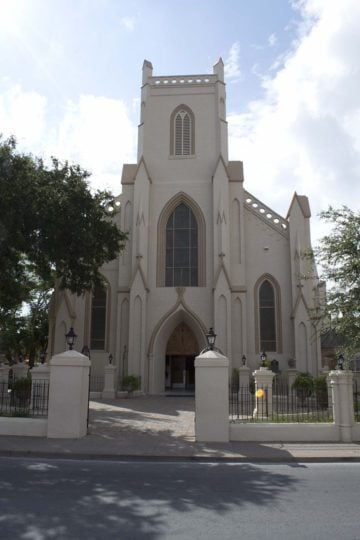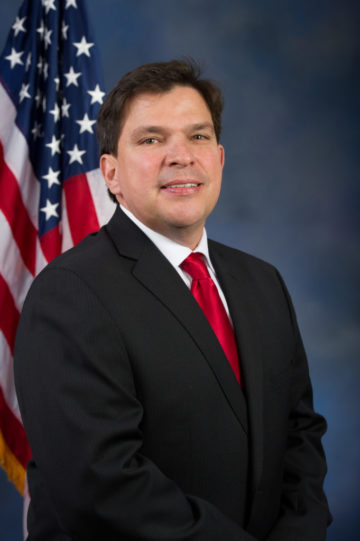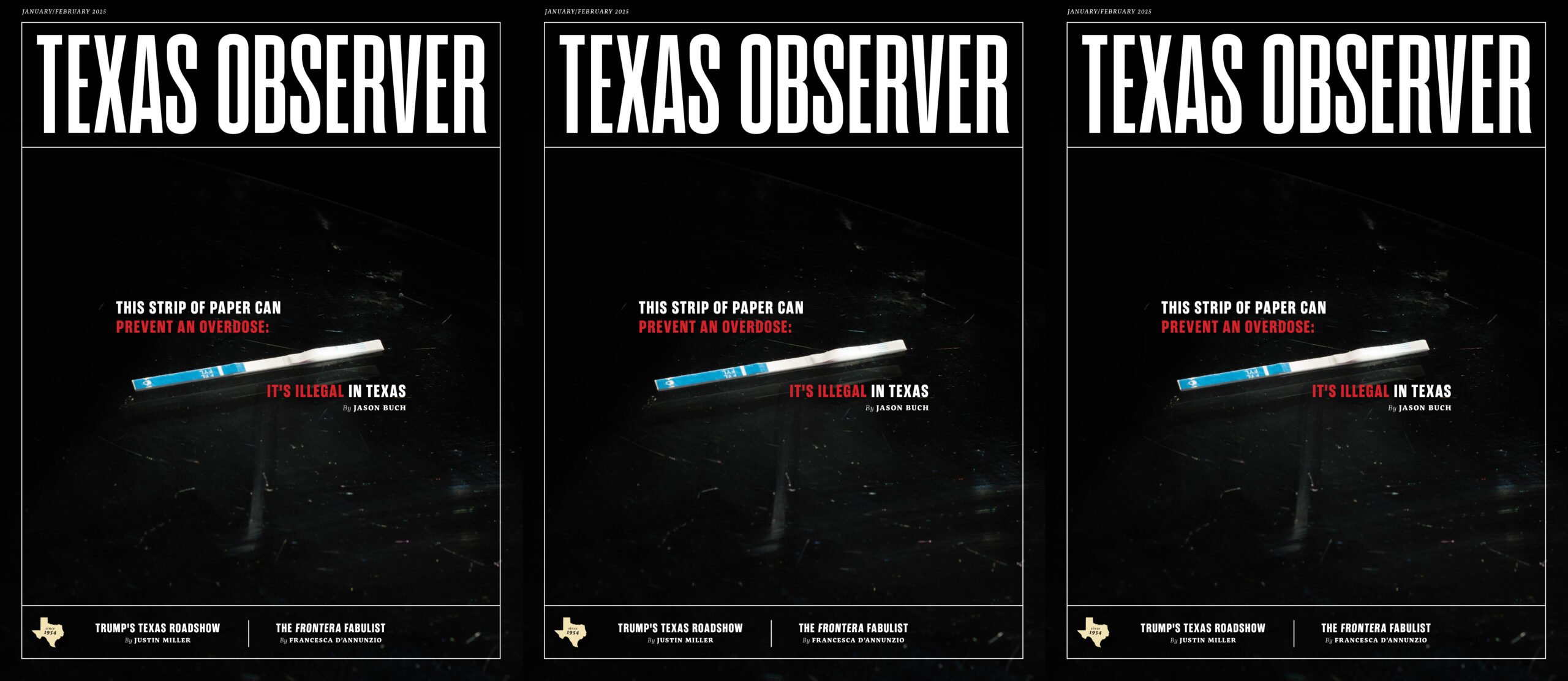
In the Rio Grande Valley, a Fight to Bring Back NPR
The Valley is now the largest market in the nation without an NPR station.

Just after 2 p.m. on May 30, public radio in the Rio Grande Valley — a 4,800-square-mile border region home to 1.4 million Texans — vanished from the airwaves. All Things Considered? Consider it gone. Local news and classical music programming disappeared, too. In their place: all-day Catholic talk radio. The Valley — a four-county area comprising Texas’ southern tip — is now the largest Nielsen radio market in the country without a National Public Radio member station.
For Valley residents, the loss of RGV Public Radio 88 FM is a bitter blow for a booming region in need of more news, not less. “With the loss of NPR, I think we’re getting close to being fairly described as a news media desert,” said Steve Taylor, editor-in-chief and publisher of the Rio Grande Guardian, an online paper and former partner of the NPR station. The Valley — which has seen a 64 percent population spike since 1990 — is known for abysmal voter turnout. Less journalism, Taylor said, assures the problem persists.
So what happened? The backstory is a bit unusual and has everything to do with papistry.
“The diocese never really embraced the concept of public radio. It was a square-peg, round-hole situation.”
Since it launched in 1991, the Valley’s NPR station has been operated by the Catholic Diocese of Brownsville through a nonprofit called RGV Educational Broadcasting. (The diocese also ran the region’s PBS station from 1984 until 2014, when it was sold; programming ceased early last year.) At the time, the diocese provided a vital service to a string of largely agrarian Hispanic communities. But in recent years, critics allege, the diocese failed to do the substantial fundraising and community outreach that public media requires.

By 2015, the diocese lost funding for the radio station from the Corporation for Public Broadcasting; by 2017, annual revenue had plummeted to just over $100,000, with anemic member support and just two full-time staff. In February, the diocese finally sold the station for $1.3 million to Immaculate Heart Media, a Catholic broadcasting group, and federal regulators approved the deal on March 29 — two months before NPR went off the air.
“The diocese never really embraced the concept of public radio,” said Ken Mills, a Minnesota-based public radio consultant and blogger. Mills pointed to a 2007 controversy, in which the Brownsville Diocese declined to give primetime air on its PBS station to a documentary about sex abuse in the Boston Archdiocese. Only a handful of NPR member stations around the country are affiliated with religious organizations, he added, and the Valley’s station was likely the only one operated by a diocese. “It was a square-peg, round-hole situation.”
Brenda Riojas, a spokesperson for the diocese, said running the stations was a “service to the community,” but other needs grew more pressing. The Catholic programming that now runs on the same frequencies, she added, “is more in line with the mission of the church.”
–
But Valley residents aren’t giving up their public radio without a fight.
In the months since the station’s sale was announced, supporters formed a nonprofit called Grassroots Public Radio RGV, crowdfunded $6,500 and got a local congressman involved. The burgeoning network has one goal: Get a new, better NPR station established at the University of Texas-Rio Grande Valley. (Most public radio stations are housed at universities.)
“If you listen to NPR regularly, you can get the equivalent of a liberal arts college degree over time,” said Dr. W.F. Strong, a UT-RGV professor whose radio show, Stories from Texas, used to air on the Valley’s NPR station and continues to air on Texas Standard throughout the state. “And it’s exceptionally important in an area like ours, where education has been neglected traditionally.”
NPR is “a potpourri of American culture — and local border culture — that there is no substitute for.”
At the end of May Strong launched the crowdfunding campaign to show his university that there was community support for a new station. Diana Dominguez, an English professor at UT-RGV who donated to the fundraiser, told the Observer that local NPR promoted “the Valley’s thriving poetry scene and musical heritage.” Sally Sandoval, a music education lecturer who also donated, said local media was especially important now that “the border is in the national news daily.”
UT-RGV was slow to jump on board at first: A spokesperson told the Monitor in early May that the college had no money for the project. But after pressure built, the university acted, announcing in mid-June a working group to look at reviving the station. Strong, who serves on the new committee, believes hosting an NPR station could help turn UT-RGV into a top-tier school like UT-Austin.

The office of Congressman Vicente Gonzalez, D-McAllen, is partnering with the working group. “We live in a very impoverished area of the country, and not having an NPR and a PBS station only goes to show that we will never get out of this situation because that only makes things worse,” said Jose Borjon, Gonzalez’ chief of staff and a former reporter for the Brownsville Herald. Borjon hopes to get UT-RGV to host both NPR and PBS affiliates.
Borjon said the working group will be visiting the University of Houston to tour its radio facility in early August, and he’ll be convening a meeting with a number of radio and TV stations, along with philanthropists. Borjon said establishing public media at UT-RGV could take as long as three years, and he hopes for a stopgap measure whereby the group would lease space from existing station owners and provide some public programming.
Patrick Gonzales, a spokesperson for UT-RGV, told the Observer that the college “looks forward” to participating in discussions about hosting public media, but he reiterated that the school has “no discretionary funds available for this initiative.”
Valley residents with high-speed internet access can still listen online to NPR’s national programs, but poorer residents are losing out, and some of the local programming is unavailable entirely.
Public radio also had a binational audience in the Valley. Bill Rovira, a language teacher in the Mexican border city of Reynosa, where 88 FM reached, told the Observer that NPR has been “assigned listening” in his English classes. “I’ve had students ask me what happened to the signal,” Rovira said, adding that NPR is “a potpourri of American culture — and local border culture — that there is no substitute for.”
This story was published in partnership with Columbia Journalism Review.


